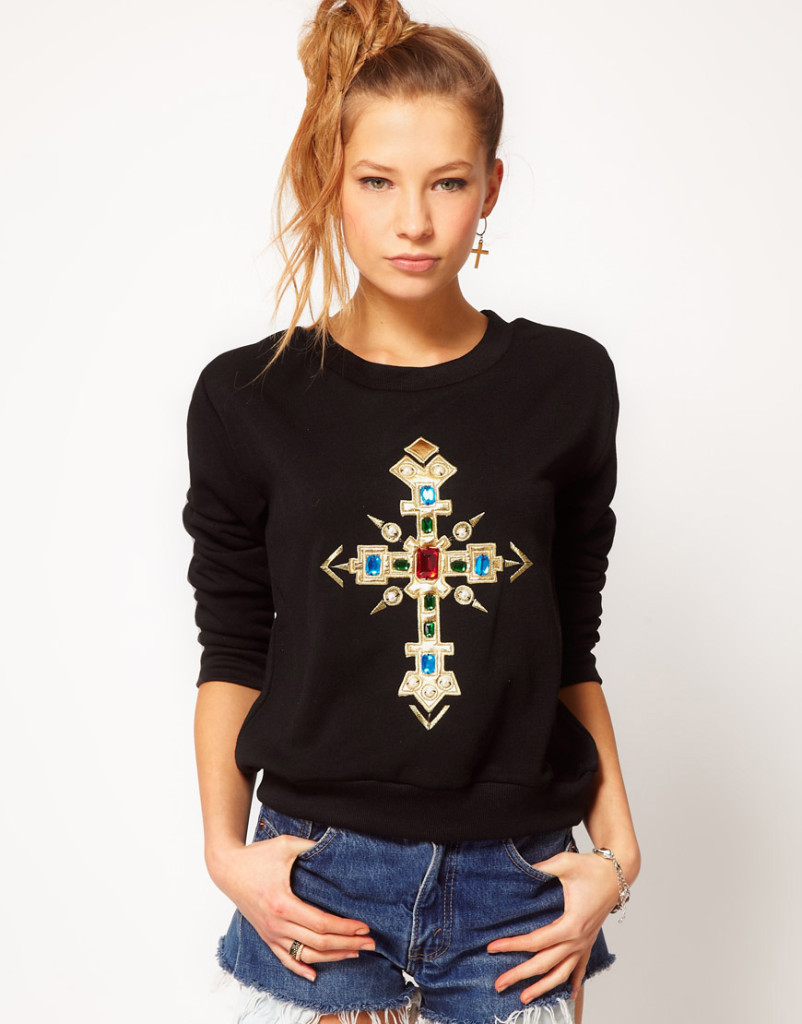Religious imagery in fast fashion: from Gabbana to Gaga
By Julia Siedlanowska, Staff Writer
Religious dress has traditionally been used to mask a person’s sexuality. So why is it that today we are using religious symbols in fashion to unveil our bodies and enhance a certain image not characteristic of the principles these religions instil?
The crucifix as a fashion statement has made its way from the runway into the mainstream, and could even be considered yesterday’s fashion news. These days, it is most commonly seen on leggings and tight black bodysuits found at cheap retail chains like Sirens or Ardene, and proliferated by pop culture stars like Lady Gaga and Miley Cyrus.
Is there a certain sense of irony in our misappropriation of this symbol? Or is it simply yet another level of the naughty Catholic schoolgirl look? Along with waves of stud jewelry, the cross has made it to the cheap shelves of crappy “bad girl” accessories. It’s enough to have the bible thumpers crying, “Stop! Don’t you know that’s the symbol of our Lord Jesus Christ?”—especially when confronted with crucifix punching rings, the perfect example of this juxtaposition of concepts.
Although the religious origins of the cross are divorced from mainstream fashion, there are some haute couture designers who take this same inspiration to a level above cheap trend.
In 2007, Jean-Paul Gaultier released a collection inspired by the Virgin Mary. Beautiful flowing gowns and halo headpieces in all assortments were like living paintings. More recently, Dolce & Gabbana released their Winter 2014 collection to rave reviews. The collection features prints inspired by “Venetian and Byzantine mosaics of the twelfth-century cathedral in the city of Monreale,” says Mark Holgate in Vogue.
As designers living in one of the most notoriously Catholic countries in the world, Domenico Dolce and Stefano Gabbana are obviously reflecting (quite patriotically) their Italian heritage. This is a collection that is deeply rooted in tradition, and has a powerful resonance with decadent prints and mosaics—something stunning to see.
I must admit that I am a child of both worlds. Coming from a Polish family, I was raised with a Catholic upbringing. I have a collection of icons in my room from around Europe because I think they’re beautiful. However, as a young lass I was guilty of saving my pennies for a “Jesus Is My Homeboy” shirt. I’ve personally endorsed both sides of this spreading trend.
It’s easy to dismiss ubiquitous biblical imagery by saying, “It’s fashion! As long as it strikes a chord, who cares!” It’s also easy to be offended. However, fashion is a reflection of our time and our culture. It is an art form at its highest, but always a reflection of our values. If young girls and pop culture celebrities are wearing crucifixes and getting inverted cross tattoos, it can only be an illustration of the next phase in these symbols’ lives.
I find myself straddling a gap—on one side, I am linked with the pleasant images of Byzantine, gold-inlaid chapels, romantic church rose gardens, and the grand, echoing silence of a cathedral. On the other side there is rebellion, tattoos, tongues, rap, and pink hair. The disparate concepts seem to coexist and fuse beautifully, with nothing of what the original messages bring to mind. Or maybe just as much. There is a certain confusion and power in the trend, and that is precisely what makes it attractive. The complexity that high fashion—versus mainstream fashion—brings in this particular case is telling. We stand between forgetting and remembering something that has never been defined.


